Fishing techniques are methods use to capture fish. Here we will discuss briefly traditional vs. modern fishing techniques. Traditional method are also called conventional fishing. In traditional fishing the fisher man capture fish usually for family using little energy and small fishing vessels. Traditional fishing techniques include cast netting, spearfishing, hand lining, trap fishing, bow and arrow fishing and hand gathering.
Traditional fishing relies on local knowledge and experience. It does not require any license and use simple and inexpensive. It has great cultural importance. Traditional fishing is also a source of employment and provide income to people in different parts of the world.
Modern fishing techniques are advance fishing techniques which are to catch fish on large scale to fulfil the need of seafood all over the world. These techniques are easy and can provide large amount of fish at a time. Modern fishing techniques include trawling, netting, longlining, trolling and drop lining.
All these techniques are mostly done on commercial scale. Fish caught by these techniques is brought to the market and provided to local customers. Modern techniques are not time consuming and can provide desired amount of fish in short time.
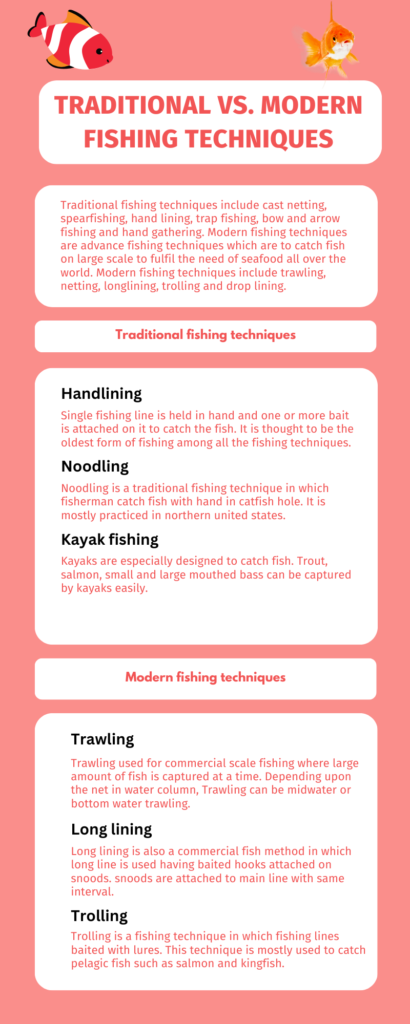
jump to a specific section
what is the importance of traditional fishing techniques and how beneficial are modern fishing techniques?
Traditional fishing techniques have their own importance. These techniques show cultural value. Traditional techniques are simple and are not harmful for environment. As these are done on small scale and use simple equipment that have no impact on environment. These techniques vary in different regions of the world.
Modern technique are playing great role in meeting the need of seafood all over the world. As modern techniques have abilities to capture a lot of fish at a time so these techniques are using in fishing industry now a days. As many people in the world depends upon fish industry for food and income. Modern fishing techniques provide them food as well as employment.
But modern fishing techniques are also destroying marine ecosystem. As trawling nets catch every marine creature in its way and is causing overfishing.
Traditional vs. Modern Fishing Techniques
Traditional fishing in japan:
Japan is a traditional country and have great history of fishing. Cormorant fishing is a traditional technique in Japan and being practiced on river for 1300 years. People use trained cormorant to catch fish. Cormorants are water birds that are trained by people to capture fish. People also use other techniques such ass netting, lining and trapping.
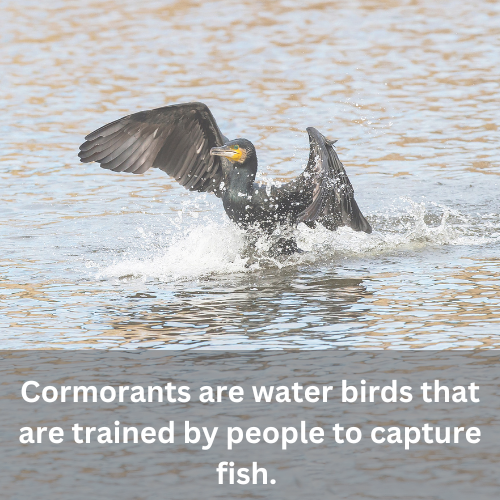
A unique style of fly fishing is tenkara that was originated in japan especially for mountain streams. Long rods are used along with fixed length of casting line having fly pattern on it.
Traditional Fishing in Hawaii:
Hawaii is popular for history of fishing techniques. One of the most popular fishing technique is pole and line fishing. Fishing bamboo pole is use to catch fishing hiding in coral reef and shallow water. The pole contain a line with baited hook. Fisherman pulls fish out of the water when fish bite the bait.
Fishing with canoe is also traditional method of Hawaii. Canoe is a boat that is used for fishing. Hawaii is popular for Polynesians. They were expert and use different techniques to catch fish.
Traditional Fishing in Australia:
Australian have been fishing for more than 40,000 years. Australian use different fishing techniques to catch fish such as netting, long lining, trapping and spearing. Most common fishing method used by fisherman is gill netting. In this technique nets are anchored to the bottom of ocean where fish come for food and is trapped by fins ,gill or spines. The nets are rectangular in shape and are held vertically into the water.
Traditional Fishing in Africa:
Subsistence fishing is the most commonly used fishing method in Africa. Traditional fishing is the only source of protein parts of Africa. Digging-out technique is also used to catch fish in Ghana. In this technique the hole is dug along the bank of river. The fisherman scoops fish out by hand when catfish stranded into the hole.
Traditional Fishing in America:
Americans develop many traditional techniques by using nets, traps, hooks and spears. Gill netting is traditional fishing method in North America. They set gill net to entangle fish by their gills. Spears and hooks are use to catch bass, trout and catfish. During seasonal migration of fish people use basket like nets attached to the poles. This method is applicable for fishing in freshwater bodies like river and streams.
Traditional fishing techniques:
Here are some important traditional fishing techniques.
Handlining
Single fishing line is held in hand and one or more bait is attached on it to catch the fish. It is thought to be the oldest form of fishing among all the fishing techniques. Ocean handlining is used to catch ground fish and pelagic fish. Fresh water fish can also be caught by this technique. Fishing can be practiced on shore and can also be done on fishing boat.
Noodling
Noodling is a traditional fishing technique in which fisherman catch fish with hand in catfish hole. It is mostly practiced in northern united states. In other region this techniques have different names like hogging, dogging, grappling and grabbling. For the safety of fisher man this technique is considered as illegal in some states.
Kayak fishing
Kayaks are especially designed to catch fish. Trout, salmon, small and large mouthed bass can be captured by kayaks easily. Kayaks are easily affordable and local people can also captured food by their own experience and skills. People use different techniques to catch fish on kayak.
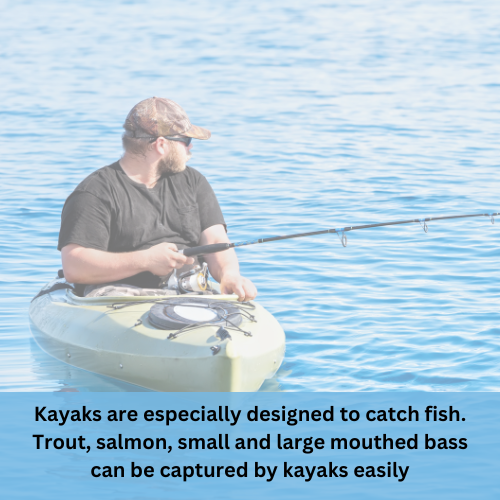
Net casting
Net casting is a traditional fishing technique in which circular net is thrown by hand in such a way that it spread into air before sinking into the water. A hand line is attached to net which remain in to hand while throwing net into the water. Retrieval clamp is present with it, when the net is full of fish this clamp closes the net around the fish. After this the net is lifted and clamp is released. fish is than placed into bucket.
Spearfishing
Spearfishing is traditional fishing technique in which sharp pointed tools are used such as jig and spears to catch the fish. This technique is profitable and successful in shallow water. Bow and arrow are also used in this technique to catch the fish.
Modern fishing techniques
Here are some modern fishing techniques which are mostly used to catch the fish now a days.
Trawling
Trawling is a fishing technique in which fishing net is pulled by trawler in the seafloor. Different sized trawler are used to catch the fish. Trawling used for commercial scale fishing where large amount of fish is captured at a time. Depending upon the net in water column, Trawling can be midwater or bottom water trawling.
In bottom water trawling net is towed in the bottom area of water. It is the main industrial method to catch fish. Mid water trawling target the fish that live in upper water column of ocean.
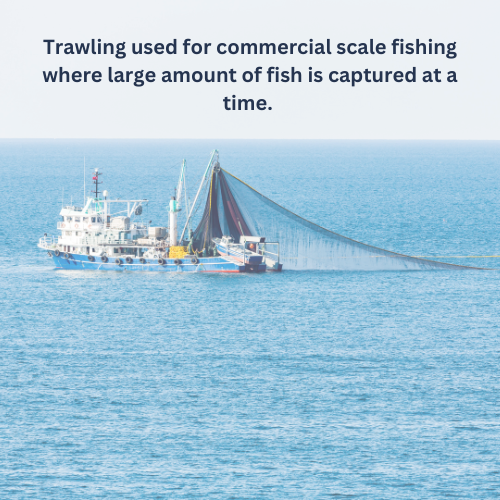
Long lining
Long lining is also a commercial fish method in which long line is used having baited hooks attached on snoods. snoods are attached to main line with same interval. Long lines can be present on bottom of water body or near the water surface. Long lining technique can be harmful for other marine creatures.
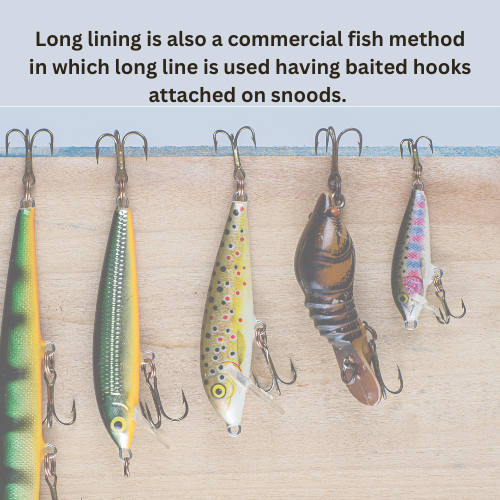
Trolling
Trolling is a fishing technique in which fishing lines baited with lures. This technique is mostly used to catch pelagic fish such as salmon and kingfish. Trolling is different from trawling in such a way that nets or trawl are used in trawling for fishing while reel, bait or lure are used to catch fish in trolling.
Fly fishing
Fly fishing is a fishing technique in which artificial flies are used to attract a fish. The fly can be made of feather or hair. Fly is attached to top of line and rod that are especially constructed. It can be done in fresh water bodies.
Advantages of Traditional fishing
- Traditional fishing techniques have low environmental impact as these are simple and do not use heavy gears.
- These techniques have cultural values and connect anglers to their ancestors.
- Simple and inexpensive equipment are used in these techniques and do not require any license.
- Traditional techniques are the ways of life in many parts of the world.
Advantages of modern fishing
- Modern fishing techniques catch fish in less time and can capture large amount of fish at a time.
- As the need of seafood is increasing modern techniques are able to meet the needs of the world.
- Equipment used in these technique are complex but but are easy to handle.
- Fishing vessels have been modified and new vessels are introduced that have all the facilities in them needed to help n catching fish
- .Modern techniques provide great efficiency to reach in deeper water and can cover large distances.
- These techniques allow anglers to catch specific specie of fish.
Future Trends in Fishing Techniques and Technology
Advanced Technology Integration:
Smart fishing gear is becoming increasingly prevalent, revolutionizing how anglers approach their sport. Modern equipment, such as connected reels and rods with built-in sensors, now provides real-time data on factors like fish movements, water temperature, and weather conditions. This technology allows anglers to make more informed decisions and enhance their fishing strategies. Additionally, artificial intelligence (AI) is playing a crucial role in predicting fish behavior. AI algorithms analyze vast datasets to offer actionable insights, helping anglers optimize their techniques and improve their catch rates.
Sustainable Practices
Sustainability is a growing focus within the fishing community. Innovations in eco-friendly gear, including biodegradable fishing lines and sustainable bait options, are helping to reduce the environmental impact of fishing activities. Catch and release practices are also being supported by technology. Specialized release tools and fish tracking systems are designed to ensure that fish are handled properly and have the best chance of survival after being released. These advancements promote conservation and help maintain healthy fish populations.
Enhanced Connectivity
GPS and mapping technologies have significantly advanced, enabling anglers to locate productive fishing spots with greater precision. Real-time weather updates and satellite imagery are now integral features that assist in planning successful fishing trips. Social media platforms and fishing apps further enhance connectivity by allowing anglers to share information, connect with communities, and access up-to-date fishing reports. These tools facilitate knowledge exchange and enhance the overall fishing experience.
Virtual and Augmented Reality
Virtual reality (VR) and augmented reality (AR) technologies are making waves in the fishing world. VR simulations offer a safe and interactive way for beginners to learn fishing techniques and for experienced anglers to practice and refine their skills. AR applications provide real-time overlays of information, such as fish species and water conditions, directly onto the user’s view. These technologies enhance training, improve technique, and offer immersive fishing experiences
Conclusion
Both traditional and modern fishing techniques have their own importance. Traditional techniques have cultural value and represent culture of different regions. While modern fishing can provide seafood in large amount. Simple equipment are used in artisanal fishing that are easy to handle while modern fishing equipment are not easy to handle and are complex.
As compared to traditional fishing method , modern fishing have some disadvantages. Trawling nets capture all the marine life coming in its way so it catch many undesired animal and this is harmful for marine ecosystem. It can cause overfishing.
Modern fishing techniques allow us to cover large distances and capture fish from bottom areas. We should use modern techniques properly to get benefits and not to pollute the environment.
Traditional techniques should not be forgot and tournaments should be held in order to knew the cultures of different regions of the world. Traditional fishing is not harmful for environment so it should be promoted to protect the marine environment.